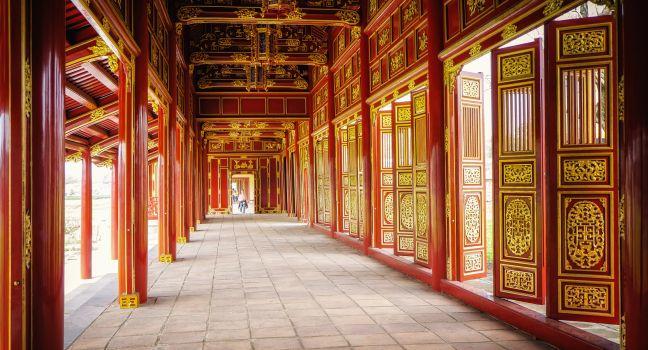It took 24 years (from 1875 to 1898) to build Phat Diem Cathedral, a complex comprising a lake, a cathedral, a stone church, Phuong Dinh (bell house), and three artificial grottoes. The cathedral, a hulking edifice made of local stone and hardwood, was designed by a Vietnamese priest named Father Sau, who died the same year the cathedral was completed. He is now interred in the narrow courtyard behind the bell tower, which was immortalized by Graham Greene in a description of a battle that took place here between French and Vietnamese forces in The Quiet American. The third floor of this tower supports a two-ton bronze bell that purportedly can be heard from 10 km (6 miles) away. The cathedral is flanked on both sides by four small chapels, all built in the late 19th century and dedicated to various saints. The prayer hall is a wooden marvel; almost the entire interior is made of Vietnamese ironwood, with 48 massive pillars supporting arched ceiling beams in what is truly an artist's loving creation. The curved eaves are a nod to Sino-Vietnamese architecture, but the crosses and saints (all sitting in the lotus position) reflect the fervor of the 150,000-strong congregation. Many of Phat Diem's Catholics fled to the south in 1954 when Vietnam was divided. A great deal of restoration work has been done on the complex, which was bombed heavily by American B-52s in 1972.
Catholicism has experienced a comeback in these parts, and because a more liberal tone has been adopted toward religion by Hanoi, Sunday Mass is now extremely popular. Services are held at 5 and 9 am, and by 10 everyone's already out in the fields. On holidays such as Christmas and Easter, expect crowds of 10,000 or more.




